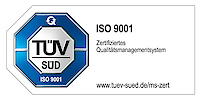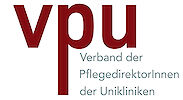Arbeitsgruppe Bartok (IHT)
Group Leader
Prof. Eva Bartok, MD
Institute for Experimental Hematology and Transfusion Medicine (IHT)
Enable JavaScript to view protected content.
Tel.: +49 228 287-51167
Fax: +49 228 287-16087
North Zone , Building No. 12
1st Floor, Room 1G409
Our research focuses on the participation of non-immune cells in innate immune sensing, both via activation of cell-intrinsic receptors and through crosstalk with professional immune cells.
Innate immune sensing is vital for the survival of all multicellular organisms, whether plants, drosophila or humans. In sickness and in health, our bodies are under the constant surveillance of innate immune cells, which search for signs of “danger” from within and without. To do so, they make use of a repertoire of germ-line encoded receptors, known as pattern-recognition receptors or PRRs, which detect molecular patterns that are associated with cellular damage or microbial pathogens (Matzinger, 1994; 2002; Medzhitov & Janeway, 2000).
Initially, innate immune sensing was thought to be restricted to a particular class of professional immune cells, including neutrophils, monocytes, macrophages and dendritic cells. Indeed, these cells express the largest variety of innate immune receptors and are critical for in the direct elimination of pathogens and the recruitment of adaptive immune cells. In contrast, non-immune cells have been traditionally viewed as bystanders to this process, passively enduring damage, infection and, if necessary, elimination without actively contributing to host defense.
However, in recent years, we have come to understand that almost all cells are capable of some form of innate immune sensing. Certain PRRs, such as RIG-I and MDA-5, which detect cytosolic dsRNA, are expressed almost ubiquitously while others, such as TLR 7, which senses endosomal ssRNA, are expressed restrictively in specific immune cell populations (Barchet, Wimmenauer, Schlee, & Hartmann, 2008; Junt & Barchet, 2015). Since most pathogens are molecularly complex and capable of activating several PRRs simultaneously, this cell-specific distribution of innate immune sensors allows for differential roles in the immune response for distinct cellular populations.
We would like to elucidate how non-myeloid somatic cells participate in the immune sensory system, both via direct innate immune sensing and in their capacity to influence traditional innate immune cells within the host. We hope that a better understanding of these interactions will also shed more light on the role of the innate immune sensing in pathogen defense and autoinflammatory disease.
Everything we ingest or inhale passes through our nasopharygeal space on its way into our bodies. Thus, the adenoid and tonsillar lymphatic tissue serve as a particularly important immune checkpoint in our bodies. Moreover, since the nasopharyngeal space is not sterile, even under physiological conditions, immune cells in this environment face special challenges distinguishing between normal microbial exposition and pathogenic microbiota. In collaboration with Stephan Herbehold and Evelyn Hartmann from the ENT department the University Hospital (HNO/UKB), we are investigating the behavior of myeloid immune cells within adenoids and the influence of adenoid epithelia on the innate immune response.
Immune defense is necessary to maintaining the integrity and function of the central nervous system. Nonetheless, an excessive immune response within the CNS can also inflict irreparable damage. In collaboration with Jonas Doerr and Oliver Brüstle (Institute for Reconstructive Neurobiology), we are currently investigating the cell-intrinsic innate immune sensing in induced pluripotent stem-cell derived (iPSC) neurons. Our focus is on nucleic acid recognition in CNS-resident cells and its role in host defense.
The rabies virus is an excellent example for the importance of the differential cell-intrinsic response. Rabies virus (RABV) is a Group V (-)ssRNA virus, and its purified genome can be detected by TLR3 and RIG-I(Hornung et al., 2006; Schlee, 2013), which both lead to induction of Type-I interferon. Nonetheless, TLR3, which is predominantly expressed on microglia (Town, Jeng, Alexopoulou, Tan, & Flavell, 2006), has been shown to lead to deleterious immune hyperreactivity and increase neuropathology (Carty, Reinert, Paludan, & Bowie, 2014; Ménager et al., 2009), while RIG-I, which is expressed in all CNS cells, has a positive effect on viral clearance (Carty et al., 2014; Rieder & Conzelmann, 2011). Underscoring the importance of RIG-I sensing of RABV, RABV has evolved measures to suppress RIG-I-mediated immunosensing, such as RABV P protein (Rieder & Conzelmann, 2011; Schlee, 2013). Since RABV is neurotropic, cell-intrinsic RIG-I mediated RABV recognition in neurons may be the central mechanism to establishing an effective immune response against an otherwise fatal pathogen.
Group members
Maximilian Appel, Medical student
Phone: +49 228 287-51140
Katarzyna Andryka-Cegielski, Doctoral candidate
Phone: +49 228 287-51140
Felix Dominick, Medical student
Phone: +49 228 287-59951
Sarah Salgert, Student assistant
Phone: +49 228 287-59951
Ria Sharma, Master student
Phone: +49 228 287-51140
Sofía Soler, Doctoral candidate
Phone: +49 228 287-51140
Saskia Schmitz, Lab Technician
Enable JavaScript to view protected content.
Phone: +49 228 287-51171

















